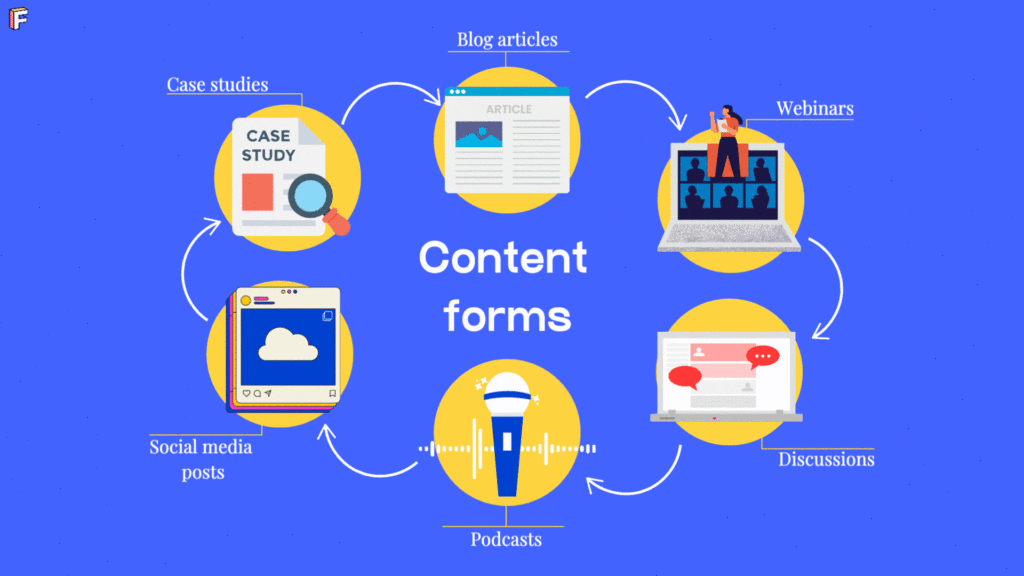Content marketing essentials: A get-started guide
Maximise your B2B growth with content marketing. Learn how to create compelling content that drives conversions and builds trust.
Listen to our podcast series – Grow2Market 🎙️
Stop chasing new clients. Let your content bring them to you.
In our first episode of the Grow2Market podcast series, we explore passive prospecting—a way to attract new clients without actively searching for them. How does it work?
Simply put, passive prospecting is a way of attracting new clients by staying present and visible online.
While finding specific contacts and reaching out to them directly can still be effective, this approach doesn’t suit every company. To deliver positive results, outreach has to be ongoing, and only a small percentage of your leads list will convert into customers.
Instead, you can attract new clients and strengthen your brand awareness by simply increasing your online presence.
Once you know the main types of customers that may be interested in your product or service, you are ready to start – you know where to go to let your expertise and experience speak. In other words, where to post your content so that it reaches the right audience.
To convert content into a powerful business tool, it is crucial to align it with your marketing strategy. This alignment ensures that each piece of content not only serves to engage but also subtly steers potential clients towards considering your services.
Continuously generate ideas for content creation by ensuring you have the right sources of information. Follow your potential and existing clients, competitors and industry gurus on social media, subscribe to relevant newsletters and YouTube channels. Consistently tracking and integrating industry trends into your content not only illustrates your knowledge and company’s position in the market but also helps align your messaging with current and potential client interests.
Creating various forms of content—posts, discussion threads, articles, case studies, podcasts, webinars—is an effective way to maintain a vibrant online presence. Each format appeals to different segments of your target market, catering to diverse preferences and consumption habits. Not every piece of content needs to be dense or highly detailed. The focus isn’t merely on being present online; it’s about being present in a way that engages and intrigues potential clients. By demonstrating thought leadership and sector expertise, you naturally attract inbound enquiries and improve client engagement.

Senior professionals with deep technical expertise often have the most valuable insights but may lack the time or writing experience to create content. Between strategic planning sessions, operations management, and leadership responsibilities, bandwidth for regular audience engagement can often be limited. How do businesses manage to keep up with the necessary task of prospecting without compromising their daily duties?
Balancing these priorities can be challenging but is achievable. The answer lies in executing smart content creation strategies.
To keep content flowing without consuming all your time, delegate tasks, leverage short-form content, and, most importantly, use the right tools. While human creativity remains essential, AI-driven writing tools can significantly enhance and speed up the content creation process. By using AI for effective content creation and diversifying your content variety, you can maintain andgrow your online presence, often with sharp spikes in audience engagement, making prospecting a natural and productive part of your business strategy.
Even though AI is a major trend now, there are many ways to use it. In terms of copywriting, it is important to remember the following:
Use tools that are designed specifically to achieve the result you are looking for. For example, CopyReadyNow is an AI-powered copywriting tool that brings the latest and best AI models (LLMs) within reach of the tightest budgets.
Make AI your reliable assistant, and don’t let it dilute your ideas on their journey to your audience.
Hi! I'm Solomiia Bodnar, Senior Business Analyst at Fractional Teams. I write about market research and business analysis.
Maximise your B2B growth with content marketing. Learn how to create compelling content that drives conversions and builds trust.
Learn how to increase customer loyalty, boost sales and fuel your business growth by building a strong community around your brand.
In 2024, Europe plays host to a series of cloud-centric events, offering opportunities for upskilling, networking, and strategic insights.
Digital Content
Events and Community
Products and Propositions
Lead and Demand Generation
Technical Platforms and Services
Fractional CxO
Technology Vendors
Industry Specialists
Service Providers
Company
Events
Careers
Resources Hub
Case Studies
Blog
Mini SEO Audit